The lips sofa, often recognized for its striking shape and vibrant colors, is an iconic piece of furniture that merges art, design, and functionality. Inspired by surrealism and pop culture, the lips sofa has become a symbol of avant-garde interior decor, catching the attention of designers, artists, and homeowners alike. Its distinctiveness lies not just in its form but in the story behind its creation, its cultural significance, and its continued influence in modern interior design.
In this article, we will explore the history of the lips sofa, the design inspiration behind it, its cultural relevance, and how it has evolved over time. We will also discuss its place in contemporary design and the role it plays in modern homes, offices, and public spaces. Additionally, we will delve into the symbolism it holds, its popularity in different parts of the world, and how to incorporate it into various interior styles.
The History of the Lips Sofa
The lips sofa was first brought to life in the 1930s as part of the surrealist movement, which sought to challenge conventional perceptions of reality. The most famous and earliest rendition of this design is the “Mae West Lips Sofa,” designed by the legendary Spanish surrealist artist Salvador Dalí. Dalí was inspired by the sensuality of the actress Mae West and her iconic lips, which became the focal point for this extraordinary piece of furniture. The sofa was not just a piece of seating but a bold statement that embodied the eccentric and imaginative essence of surrealism.
Dalí’s lips sofa was part of a broader effort to create pieces that were functional but also artistic, blurring the lines between art and everyday objects. His approach to the lips sofa epitomized the surrealist ideal of taking familiar objects and presenting them in a way that would evoke new, often disorienting, associations.
While Dalí’s original sofa was intended as an art piece rather than a mass-market item, it laid the groundwork for the future of bold, unconventional furniture designs. Throughout the decades, variations of the lips sofa have been produced by several designers, making it a timeless symbol of creativity and individualism in furniture design.
Design Inspiration: Surrealism Meets Pop Art
The lips sofa draws inspiration from a variety of artistic movements, including surrealism and pop art. Salvador Dalí, the mastermind behind the original design, was a pivotal figure in surrealism, a movement that aimed to bridge the gap between the unconscious mind and reality. By designing a sofa in the shape of human lips, Dalí challenged the traditional notion of what a sofa could or should be.
The design of the lips sofa has evolved over time, especially as the pop art movement gained momentum in the 1950s and 1960s. Pop art, characterized by bold colors, playful shapes, and references to popular culture, was a natural extension of surrealism’s challenge to artistic norms. The lips sofa’s striking form and use of bold red, pink, or other vibrant colors made it an ideal piece to align with pop art’s embrace of everyday objects as art.
The lips sofa’s strong association with sensuality and the human body also taps into the themes of eroticism and glamour, particularly in the Hollywood film industry, which has always been a major influence on art and design. The interplay between surrealist elements, bold forms, and pop culture imagery solidified the lips sofa’s position as a design icon.
Cultural Significance of the Lips Sofa
The lips sofa holds cultural significance far beyond the world of interior design. It is a symbol of boldness, artistic freedom, and a celebration of human sensuality. The sofa represents the merging of art and life, where functional items are no longer just functional—they become statements of personality and creativity.
In popular culture, the lips sofa has been featured in countless movies, music videos, fashion shoots, and advertisements, further embedding it in the public consciousness. Its sensuous shape makes it an ideal representation of romanticism and elegance, particularly in settings that aim to evoke feelings of luxury and sophistication.
The lips sofa has also become a cultural symbol in feminist art. By using a representation of female lips, a traditionally sexualized body part, as the shape for a functional object, the design can be seen as both a playful and subversive take on traditional gender roles. While it embodies sensuality, it also presents a reclaiming of the female form in a way that empowers rather than objectifies.
Evolution of the Lips Sofa in Contemporary Design
Over the years, the lips sofa has evolved into different styles, materials, and color schemes, making it adaptable to various interior design trends. While the original designs were largely crafted in bold reds and bright hues, modern iterations of the lips sofa come in more subdued colors like black, white, and pastel tones, offering versatility for a wide range of aesthetic preferences.
Designers have also experimented with different materials. The traditional velvet or fabric upholstery has expanded to include leather, faux fur, and even metallic finishes, giving the lips sofa a contemporary twist. The evolution of this sofa has made it suitable for not only eclectic and modern interiors but also more minimalistic and industrial spaces, demonstrating its enduring appeal.
While it remains a popular choice for art collectors and avant-garde enthusiasts, the lips sofa is also being embraced by younger generations who appreciate its playful, whimsical nature. It is frequently seen in modern living rooms, boutique hotels, and high-fashion retail spaces. This versatility ensures that the lips sofa remains relevant even in today’s fast-changing design world.
Symbolism of the Lips Sofa
The lips sofa carries rich symbolic meaning. At its core, the design is playful and provocative, reflecting the sensuality associated with lips and human expression. Lips, after all, are central to communication and emotion, playing a key role in how people convey love, affection, and desire.
In some interpretations, the lips sofa can be seen as a form of artistic rebellion, challenging the convention that furniture should be neutral and functional. It defies the notion of bland, utilitarian design by offering a piece that is both functional and full of character. For those who choose to incorporate the lips sofa into their decor, it often represents a desire to break free from traditional boundaries and embrace bold self-expression.
In contemporary culture, where individuality and uniqueness are celebrated more than ever, the lips sofa has come to symbolize nonconformity. It stands as a bold statement for those who are not afraid to embrace the unconventional and express their personalities through their surroundings.
Popularity Around the World
The lips sofa has transcended its European surrealist roots to gain popularity worldwide. In North America, it became especially popular during the pop art movement, where its vibrant design fit perfectly into the colorful, kitschy aesthetic that defined mid-century modernism. Over time, its influence spread globally, with versions of the sofa making appearances in the homes of celebrities, high-end fashion brands, and art galleries.
In Europe, the lips sofa remains a staple in eclectic and avant-garde design. It is particularly popular in cities with strong design cultures, such as Milan, Paris, and Barcelona, where modern art continues to thrive. In Asia, where bold, contemporary designs have gained increasing recognition, the lips sofa has found a home in luxury hotels, creative offices, and high-end residential interiors.
The global appeal of the lips sofa is a testament to its timeless design, transcending cultural and geographic boundaries. Whether as a piece of functional art or a statement piece in a living room, the lips sofa continues to attract attention from diverse audiences around the world.
Incorporating the Lips Sofa into Modern Interiors
Incorporating a lips sofa into a modern interior can be a bold design move, adding a focal point and a touch of artistic flair. The key to successfully integrating the sofa is balancing its vibrant and distinctive form with other elements in the room.
- Minimalist Spaces: In minimalist spaces, where the color palette is often neutral, the lips sofa can serve as a striking accent piece. Pairing it with clean lines, neutral walls, and sleek furnishings allows the sofa to stand out without overwhelming the space.
- Eclectic Interiors: For those who prefer eclectic designs, the lips sofa can blend seamlessly with a mix of patterns, textures, and other bold furniture pieces. Its whimsical design complements vintage items, bold artworks, and vibrant textiles.
- Luxury Living Rooms: In luxury settings, such as high-end homes or boutique hotels, the lips sofa adds an element of playfulness to an otherwise sophisticated space. Upholstered in luxe materials like velvet or leather, it exudes elegance while maintaining its artistic roots.
- Creative Workspaces: The lips sofa is also an excellent choice for creative offices, design studios, and gallery spaces. Its bold shape can inspire creativity and serve as a conversation piece for clients and collaborators.
- Outdoor Lounges: Some versions of the lips sofa are designed for outdoor use, making them ideal for chic rooftop lounges or garden seating areas. Made with weather-resistant materials, they offer a playful touch to outdoor spaces while still being practical.
Conclusion
The lips sofa is more than just a piece of furniture—it is a work of art, a cultural statement, and a design icon. Its origins in surrealism and its evolution through pop art have made it a timeless piece that continues to inspire and captivate. With its bold form, rich symbolism, and global appeal, the lips sofa transcends mere functionality, offering those who choose it an opportunity to express their creativity and personality through their interior design.
Whether in a minimalist apartment, a luxurious living room, or an eclectic office space, the lips sofa remains a statement of individuality and artistic expression. Its place in design history is secure, and its influence continues to be felt across the world of art and interior design.

 App6 months ago
App6 months ago
 News6 months ago
News6 months ago
 Business6 months ago
Business6 months ago
 News6 months ago
News6 months ago
 Tech6 months ago
Tech6 months ago
 Tech6 months ago
Tech6 months ago
 Tech6 months ago
Tech6 months ago
 Tech6 months ago
Tech6 months ago



